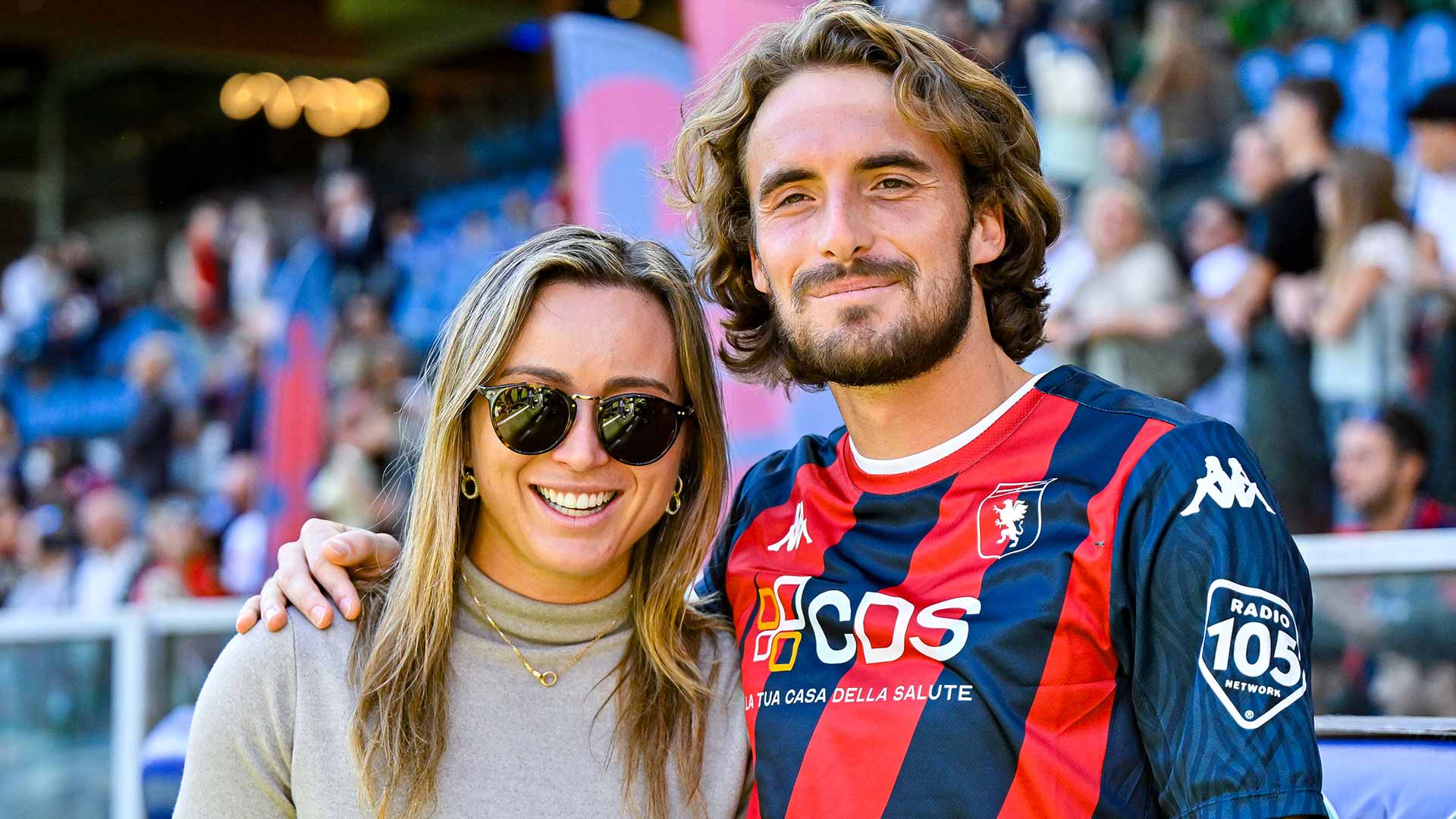

Paula Badosa was one of the stories of the Australian Open. The 27-year-old Spaniard dropped just one set en route to her first major semi-final, with her run propelling her back into the Top 10 for the first time since October 2022.
Supporting her all the way was her partner and ATP Tour star Stefanos Tsitsipas.
“Her success gives me a lot of motivation,” Tsitsipas told ATPTour.com when reflecting on Badosa’s run. “It was really impressive and deserved.”
The Greek, a two-time major finalist and three-time ATP Masters 1000 titlist, has achieved a number of highs in his career. However, the 26-year-old has struggled in recent times. His best result at a major in 2024 came at Roland Garros, where he reached the quarter-finals before he started 2025 by losing in the first round in Melbourne.
In need of a lift, Badosa’s achievements down under provided the Greek with renewed hope and inspiration.
“With her run I thought, ‘If she can do it, why can't I?’ That’s how I look at it," Tsitsipas said. "I learned a lot from this process of how to get to a Grand Slam semi-final. I felt privileged that I could give her some small advice to help her en route to the semi-finals. She gave me the freedom to give some feedback and tips.
“Through my advice to her, I also learned things about myself in terms of tennis and how I see the court and how I approach my own game. It pushes me on.”
Badosa's journey to the top of the sport has been marked by resilience. The Spaniard sat at a career-high No. 2 in 2022 before her career suffered a setback in 2023 when she endured a stress fracture in her back. After dropping outside the Top 100, she gained momentum last year in Rome where she reached the fourth round. In August, she triumphed in Washington to return to the winners’ circle for the first time since 2022.
Tsitsipas and Badosa began dating in June 2023 and they have regularly sat courtside to support each other. Speaking ahead of the ATP 500 event in Rotterdam, Tsitsipas gave insight into his conversations with Badosa during her Australian Open success, highlighting the importance of openness and shared respect.
"We had serious conversations during her run,” Tsitsipas said. “I was being strict with her as I didn't want to be too soft. Because in this sort of circumstance, she's learned to play her own way. But I feel there's so much potential in her that she can extract from her game and use that to spread even more of her tennis identity better inside the court.
“I feel like there were certain times in the past where she was underplaying. She just didn't realise it because she was stuck in her comfort zone. But what I'm trying to help her do is get her out of her comfort zone and make her more dangerous on the court.
“It was inspiring to me to see her execute because it teaches me how to do things when I am in that position. I feel she has a lot of respect for what I have to say. I'm really happy I have a relationship like this where I can exchange ideas and operate on a different scale than I usually operate at.”
Tsitsipas returns to Tour this week at the ABN AMRO Open in Rotterdam, where he has accepted a wild card into the ATP 500 indoor hard-court event.
The World No. 13 has not competed since 13 January, when he lost to Alex Michelsen in Melbourne and is eager to kick off his season properly in Rotterdam.
“I've had so much practice and played so many sets during the Australian Open period in training,” said Tstisipas. “I have had a good time off and I am really prepared now. I feel I'm fresh. I'm happy to be very fit because I've worked a lot on fitness in recent months. Tennis-wise, I'm there. I just need to now deliver.”
Tsitsipas opens against a qualifier in Rotterdam and could meet former Top 10 star Matteo Berrettini in the second round.